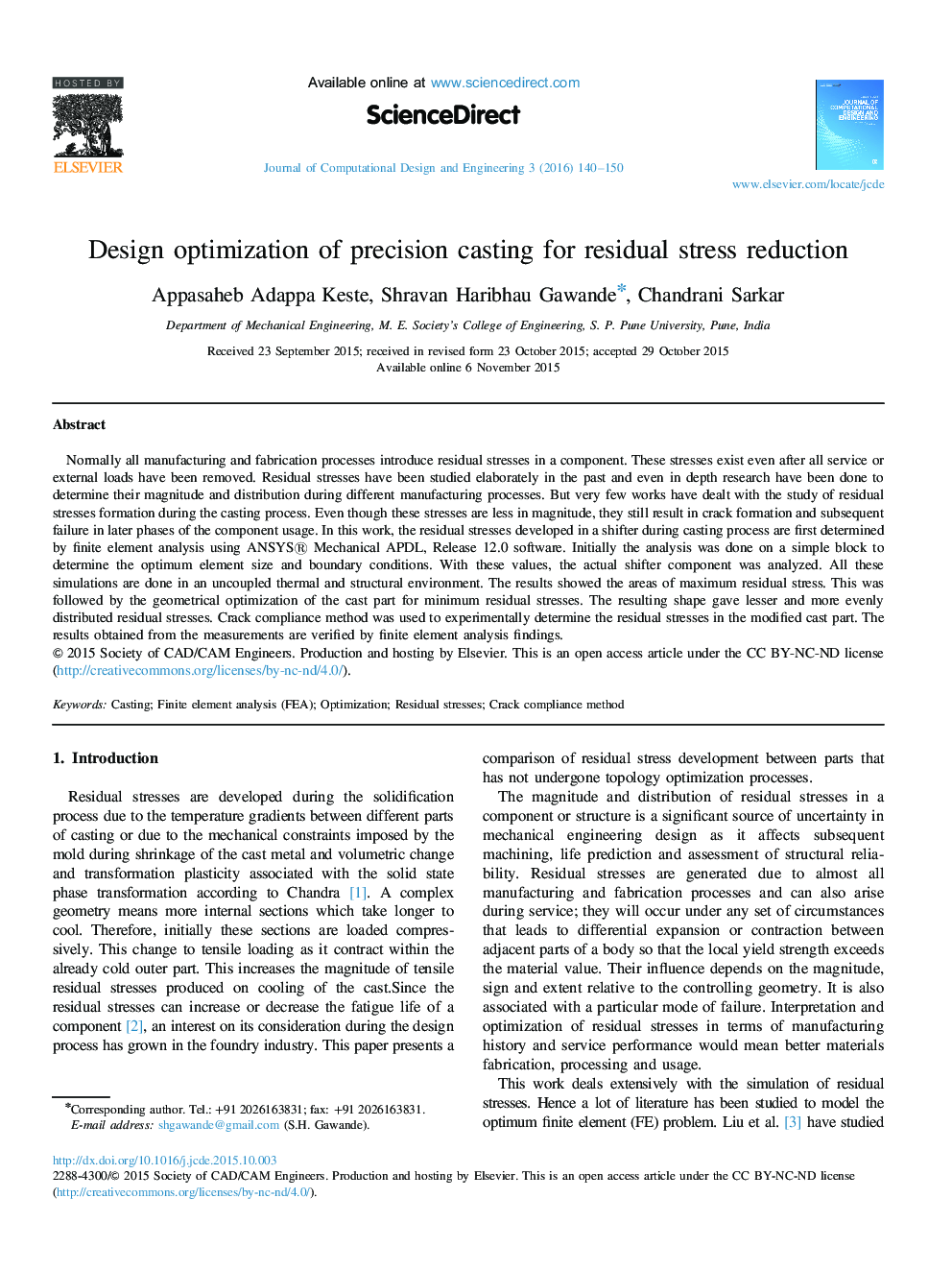| کد مقاله | کد نشریه | سال انتشار | مقاله انگلیسی | نسخه تمام متن |
|---|---|---|---|---|
| 442840 | 692401 | 2016 | 11 صفحه PDF | دانلود رایگان |
• This paper focus on analytical, numerical and experimental design optimization of shifter.
• Performed design optimization by finite element analysis and experimental of live industrial problem.
• The results can applicable as a basis of design and optimization of new type of the automotive parts.
• The results of the current work present the actual behavior of induced stresses.
Normally all manufacturing and fabrication processes introduce residual stresses in a component. These stresses exist even after all service or external loads have been removed. Residual stresses have been studied elaborately in the past and even in depth research have been done to determine their magnitude and distribution during different manufacturing processes. But very few works have dealt with the study of residual stresses formation during the casting process. Even though these stresses are less in magnitude, they still result in crack formation and subsequent failure in later phases of the component usage. In this work, the residual stresses developed in a shifter during casting process are first determined by finite element analysis using ANSYS® Mechanical APDL, Release 12.0 software. Initially the analysis was done on a simple block to determine the optimum element size and boundary conditions. With these values, the actual shifter component was analyzed. All these simulations are done in an uncoupled thermal and structural environment. The results showed the areas of maximum residual stress. This was followed by the geometrical optimization of the cast part for minimum residual stresses. The resulting shape gave lesser and more evenly distributed residual stresses. Crack compliance method was used to experimentally determine the residual stresses in the modified cast part. The results obtained from the measurements are verified by finite element analysis findings.
Figure optionsDownload as PowerPoint slide
Journal: Journal of Computational Design and Engineering - Volume 3, Issue 2, April 2016, Pages 140–150
